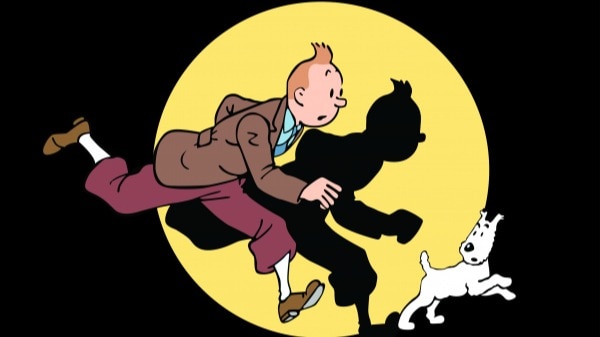
TINTIN TURNS 95, BUT REMAINS FOREVER YOUNG: 15 FACTS ON HERGE'S TIMELESS LEGACY
On January 10, 1929, a young reporter named Tintin and his loyal dog, Snowy, embarked on a train journey from Brussels to Moscow, marking the beginning of Tintin's first grand adventure and the launch of Hergé's illustrious career.
'The Adventures of Tintin', a globally renowned comic series, unfolded from 1929 onwards, crafted by the Belgian comic strip maestro Hergé, also known as Georges Remi (1907-1983).
Comprising 24 albums, the series captivated readers from the debut, 'Tintin in the Land of the Soviets,' in 1930 to the unfinished masterpiece, 'Tintin and the Alph-Art.'
THE ORIGIN OF TINTIN: THE EARLIEST YEARS
Georges Remi, aka Hergé, was born on May 22, 1907, in Brussels, finding early education at the monotonous corridors of Saint-Boniface College.
Bored during his studies, he found solace in the boy scouts in 1921, earning the nickname 'Curious Fox.' His artistic journey began with drawings in scouting magazines, eventually leading him to the subscription department of Le Vingtième Siècle magazine.
In 1928, as Chief Editor of Le Petit Vingtième, he introduced Tintin and Snowy on January 10, 1929, in Le Petit Vingtième, a weekly youth supplement, marking the birth of an iconic duo.
'The Adventures of Tintin, Reporter for Le Petit Vingtième, Tintin in the Land of the Soviets' was published as a book in 1930. It gave birth to a legend and was one of the most captivating interplays between fiction and reality in the twentieth century.
TINTIN'S SOARING POPULARITY
The next five decades witnessed the meteoric rise of Tintin, Captain Haddock, Professor Calculus, and Snowy, captivating readers globally.
In 1946, the weekly Franco-Belgian comics magazine, 'Tintin', made its grand entrance, subtitled 'The Magazine for the Youth from 7 to 77.'
A luminary in Franco-Belgian comics, it housed distinguished series like Blake and Mortimer and Alix, with the pinnacle being 'The Adventures of Tintin.'
Originally under Le Lombard, the inaugural issue materialized on September 26, 1946, catapulting the fictional journalist to unparalleled heights of popularity. Issues were printed till 1993.
WHAT SETS TINTIN APART
Tintin transcends being a mere hero; he is the nucleus of a multifaceted universe, surrounded by captivating characters like Captain Haddock, Professor Calculus, Bianca Castafiore, and Thompson & Thomson. Hergé's creation boasts a unique blend of breath-taking tales, clear line graphics, and universally resonant themes.
'The Adventures of Tintin' served as a geographical initiation for generations, unveiling unexplored countries, cultures, and landscapes. Amidst a pre-television era, Tintin's international expeditions became a window to wonders, from the Sahara to the Himalayas, the Amazon to the Scottish Highlands -- an immersive introduction to our planet.
Reprinted and cherished across the globe, Tintin's adventures continue to inspire artists, writers, producers, and directors.
With unwavering vitality, the never-aging journalist and adventurer embodies universal values, reflecting everyone's aspirations, and persists in conquering the world, leaving an indelible mark on the hearts of fans worldwide.
FACTS ON TINTIN AND HIS CREATOR HERGE
1. Tintin's character draws inspiration from Herge's first comic strip, 'Totor.'
2. The Thompson twins' characters are based on Herge's father and uncle, who were also twins. The characters were technically neither twins, nor identical, but could be distinguished by their moustaches. Herge's grandmother served as the inspiration for the iconic opera singer Bianca Castafiore.
3. Throughout the series, Tintin's surname and age remain undisclosed, adding an air of mystery to the intrepid reporter. Tintin's age varies in the series, starting as a young boy and subtly maturing in later issues, yet his precise age is never revealed.
4. Tintin didn't always have a quiff. On Page 8 of 'Tintin in the Land of the Soviets,' as he drives a convertible car, Tintin's quiff rises and never goes back down, giving him his iconic hairstyle.
5. Around 1924 onwards, Georges Remi signed his drawings with the pen name Hergé by reversing his initials G and R (Georges Remi), making it RG (as pronounced in French) or Herge.
6. Tintin explored the moon in 1954, in 'Destination Moon' and Explorers on the Moon', 15 years before Neil Armstrong's historic moonwalk.
7. Tintin's nearly expressionless face serves as a blank canvas, allowing readers to project their own emotions onto the character.
8. Throughout his career, Hergé grappled with increasing depression, feeling enslaved by his prosperity and enduring mental and physical anguish, a poignant depiction evident in a 1947 drawing where the creator, gazing solemnly at a stuffed drawing table, is met with the fierce visage of Tintin brandishing a whip.
9. Published in 1931, 'Tintin in the Congo' sparked accusations of racism against Hergé many decades later.
10. Ironically, Hergé never visited the countries Tintin explored in his adventures.
11. Hergé subtly appears as a background character in several Tintin comics, portrayed as a blonde man with a long nose.
12. Herge passed away from a leukemia-like illness on May 3, 1983, at 76, leaving behind 23 Tintin comics and unfinished sketches for 'Tintin and Alph-Art.'
13. Tintin's dog, Snowy, made cameo appearances in various comics and TV shows, including 'The Simpsons' and 'South Park.'
14. Since 1929, over 270 million copies (2019 data) of Tintin adventures have been sold, translated into more than 110 languages, including Hindi, Bengali, Malayalam, and Sanskrit.
15. Bengali became the first Indian language to host Tintin since 1975, with 24 books translated in Anandamela, the ABP group's children's magazine. Herge personally supervised the Bengali translation, fostering a deep connection with Bengali readers and receiving numerous fan mails from young admirers.
2024-01-10T16:35:20Z dg43tfdfdgfd